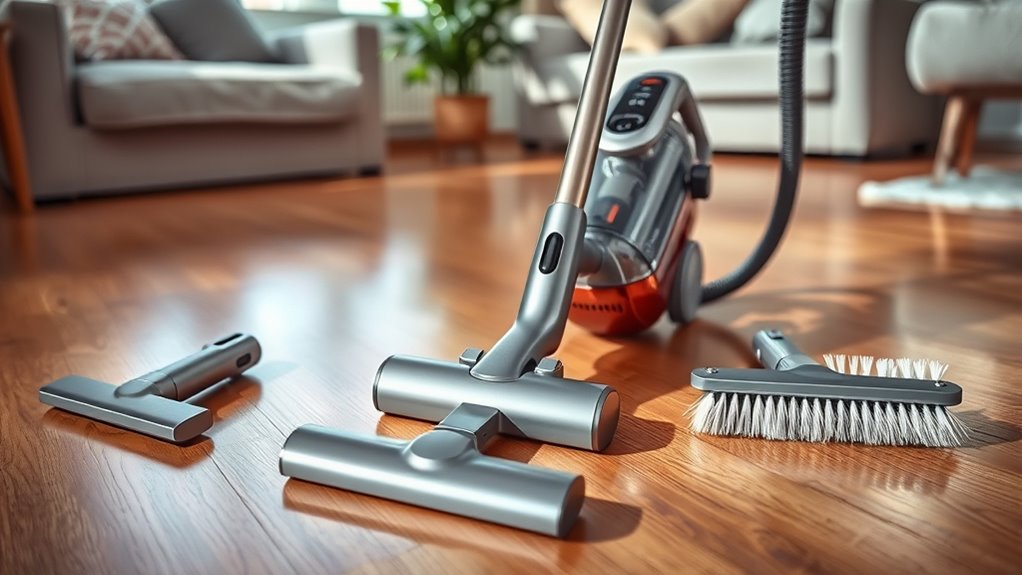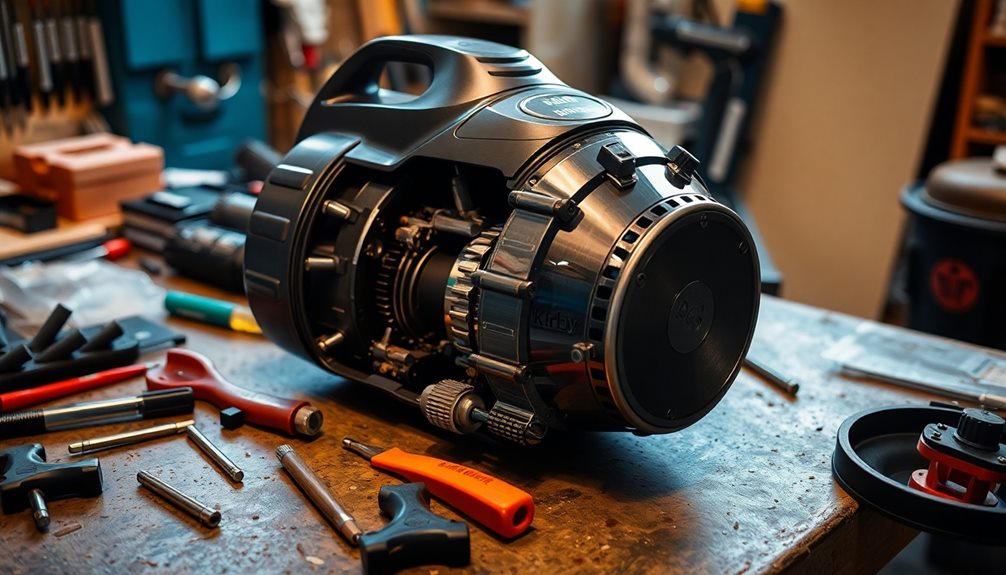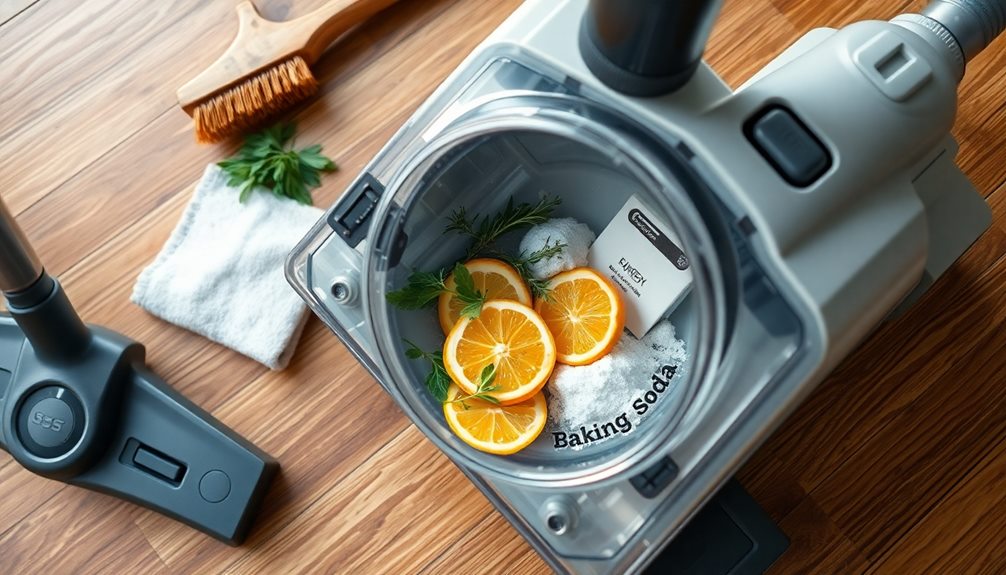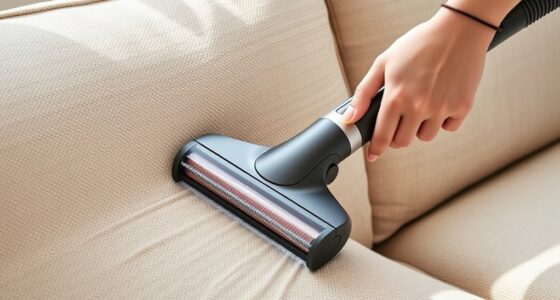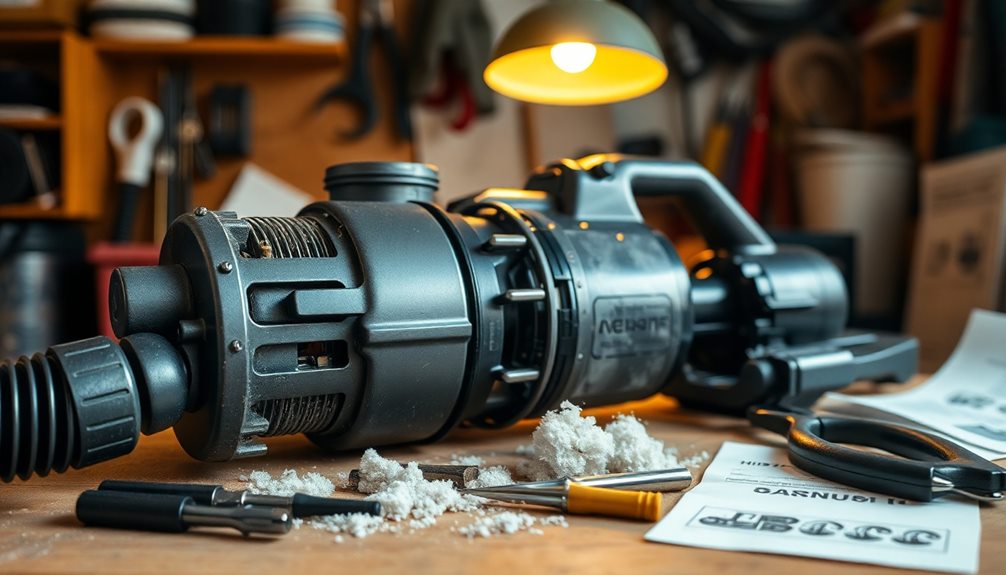Understanding vacuum attachments helps you clean better and faster. The crevice tool reaches tight corners and along edges, while dusting brushes gently loosen dust on delicate surfaces. Upholstery tools remove pet hair and crumbs from fabric furniture, and wide nozzles handle large debris on floors. Choosing the right attachment guarantees your surfaces stay safe, your cleaning is more efficient, and your vacuum lasts longer. Stay with us to discover how to use each tool like a pro.
Key Takeaways
- Understand the purpose of common attachments like crevice tools, dusting brushes, and upholstery tools for targeted cleaning.
- Match each attachment to specific surfaces and debris types to maximize cleaning efficiency and prevent damage.
- Regularly inspect, clean, and store attachments properly to prolong their lifespan and maintain optimal performance.
- Use specialized tools such as HEPA brushes for allergens and delicate surfaces to improve air quality and protect surfaces.
- Proper attachment selection and maintenance save time, enhance cleaning results, and protect your vacuum and surfaces.

Are you making the most of your vacuum cleaner? If you want to get the best cleaning results, understanding your vacuum attachments is essential. Proper attachment maintenance is key to keeping your tools effective and prolonging their lifespan. Regularly check for clogs, debris, or damage, and clean or replace parts as needed. This simple upkeep ensures each attachment performs at its best and prevents unnecessary strain on your vacuum. When it comes to choosing the right tool, think about the surface you’re cleaning and the type of debris you’re tackling. Different attachments are designed for specific tasks, so selecting the appropriate one makes a noticeable difference in your cleaning efficiency.
Maximize your vacuum’s effectiveness by choosing and maintaining the right attachments for each surface and debris type.
The first step is to familiarize yourself with the various attachments that come with your vacuum. A crevice tool, for example, is perfect for reaching tight corners, along baseboards, and around furniture legs. Using it regularly on these spots helps prevent dust buildup and keeps your space looking fresh. A dusting brush is another versatile attachment that gently loosens dust from delicate surfaces like shelves, blinds, and lampshades. It’s useful because it minimizes the risk of scratching or damaging sensitive items. For upholstery and furniture, a motorized brush or upholstery tool is your best bet, helping lift pet hair, crumbs, and dust from fabric surfaces without much effort. Incorporating essential oils for cleaning tools during maintenance can also leave a fresh aroma and help disinfect your attachments naturally.
Choosing the right tool also involves considering the type of debris you’re cleaning. For larger debris like crumbs or pet food, a wide nozzle or floor brush works efficiently. For fine dust or allergens, a HEPA-filtered brush or a specialized allergen tool helps trap tiny particles, improving air quality. Hardwood floors benefit from a soft-bristled attachment that won’t scratch the surface, while carpets often require a more robust brush to loosen dirt embedded deep within fibers. Always keep in mind that using the wrong attachment can reduce cleaning effectiveness or even damage your surfaces, so take a moment to assess what’s best for each task.
In addition to selecting the right tool, attachment maintenance is vital for sustained performance. Regularly check for wear and tear, clean attachments after use, and store them properly to prevent warping or cracking. Maintaining your tools ensures they stay effective longer, saving you time and money in the long run. Remember, a well-maintained attachment not only performs better but also protects your vacuum from unnecessary strain. Overall, understanding how to choose and care for your vacuum attachments helps you clean smarter, not harder, transforming a basic chore into a more efficient and satisfying task.
Frequently Asked Questions
Can Vacuum Attachments Damage Delicate Surfaces?
Yes, vacuum attachments can damage delicate surfaces if you’re not careful. Using the wrong attachment or applying too much pressure can cause surface scratches or dent surfaces. To prevent this, choose attachments with good attachment durability and soft bristles designed for delicate items. Always test in an inconspicuous area first, and use gentle, steady movements to avoid damaging your surfaces while cleaning.
Are Universal Attachments Compatible With All Vacuum Brands?
You might wonder if universal attachments fit all vacuum brands. Generally, they offer good attachment versatility, but brand compatibility varies. Some universal tools work with most vacuums, while others may require adapters. Check your vacuum’s hose diameter and connector type before purchasing. If you choose the right universal attachment, you’ll enjoy a more versatile cleaning experience without worrying about compatibility issues.
How Often Should I Replace Vacuum Attachments?
You should replace vacuum attachments when their attachment durability decreases considerably or if they show signs of damage, such as cracks or tears. Typically, the replacement frequency depends on usage, but inspecting them regularly helps guarantee peak performance. Over time, wear and tear reduce their effectiveness, so replacing attachments when they no longer function properly maintains your vacuum’s efficiency and prolongs its lifespan.
Do Attachments Improve Vacuum Cleaning Efficiency?
Think of vacuum attachments as your secret arsenal for better cleaning. They boost attachment versatility, allowing you to reach tricky spots and handle different surfaces with ease. Using the right tools can truly enhance your cleaning performance, making chores quicker and more thorough. So, yes, attachments do improve efficiency—they help you get more out of your vacuum, ensuring your home stays spotless with less effort.
Can Attachments Be Used for Pet Hair Removal?
Yes, attachments are great for pet hair removal. They offer attachment versatility, allowing you to target pet hair in hard-to-reach areas like upholstery and stairs. Use a brush or upholstery tool with your vacuum to effectively lift pet hair without damaging surfaces. These attachments make cleaning easier, saving you time and effort, especially when dealing with stubborn pet hair on furniture and carpets.
Conclusion
Now that you know what each vacuum attachment does, you’re ready to tackle any cleaning task with confidence. Did you know that using the right attachment can cut your cleaning time in half? Whether it’s reaching tight corners or deep-cleaning upholstery, these tools make your vacuum more versatile. So, next time you pick up your vacuum, remember: the right attachment isn’t just an accessory—it’s your secret weapon for a spotless home.
